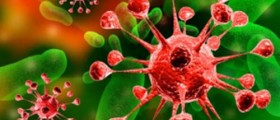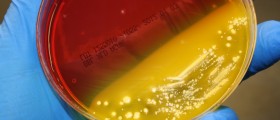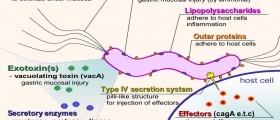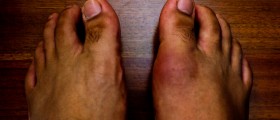
Food poisoning is considered a common illness in the United States affecting millions of people each year. Infection with different foodborne microorganisms may be asymptomatic or cause serious symptoms and sometimes even life-threatening complications. Some foodborne infections may even cause lethal outcome.
It is estimated that humans may be affected by more than 250 foodborne diseases. However, the most common ones are food poisoning caused by Campylobacter, Salmonella and Shigella.
Campylobacter Food Poisoning
Food poisoning caused by Campylobacter develops after consumption of contaminated food, water and unpasteurized milk. The bacterium may be also contracted through contact with infected animals, both domestic and wild animals.
The disease typically leads to acute diarrhea (watery and sometimes bloody), nausea and vomiting, abdominal pain/cramping and malaise. Fever is one more characteristic of campylobacter food poisoning.
Campylobacter food poisoning is not serious for healthy individuals. However, it may be detrimental for immunocompromised people. In them the disease may further progress and cause arthritis as well as brain and nerve problems.
Campylobacter food poisoning is confirmed after testing samples of stool. Healthy individuals fully recover within 2-5 days and they need no specific treatment apart from adequate hydration. Severe cases require proper antibiotic treatment.Salmonella Food Poisoning
Salmonella is a bacterium that can be easily transmitted to humans from infected domestic and wild animals (poultry, pigs, cattle and pets). In many cases food poisoning develops as a consequence of consuming undercooked poultry and raw eggs or may occur after consuming unpasteurized milk. Food poisoning may be also caused by a human who is a carrier of the bacterium.
Patients suffering from salmonellosis develop fever, suffer from abdominal pain, nausea, diarrhea and vomiting. Loss of appetite is another characteristic of the disease. Carriers of the bacterium have no symptoms but are able to transmit the infection by unhygienic manipulation of food.
Most patients recover completely. Some of them may end up with Reiter's syndrome. Death is a rare complication of salmonellosis and affects only very young or very old individuals as well as immunocompromised patients.
The bacterium is isolated from a stool sample and treatment is not necessary since all symptoms withdraw within 7 days after the onset of disease. Antibiotics are only prescribed in severe salmonella food poisoning and in carriers of the bacterium.Shigella Food Poisoning
Shigella food poisoning develops due to food contamination with infected human or animal waste containing the bacterium. Therefore, the infection is transmitted through fecal-oral route.
Shigellosis is a cause of severe diarrhea. It is frequent in tropical or temperate climates and is associated with poor personal hygiene.
After consumption of contaminated food patients soon develop fever, bloody diarrhea and feel nauseated. Vomiting and cramping occur as well.
The bacterium is easily identified after taking stool samples. Treatment includes plenty of fluids (prevention of dehydration) and sometimes antibiotics.

















Your thoughts on this
Loading...